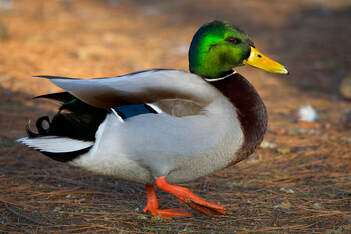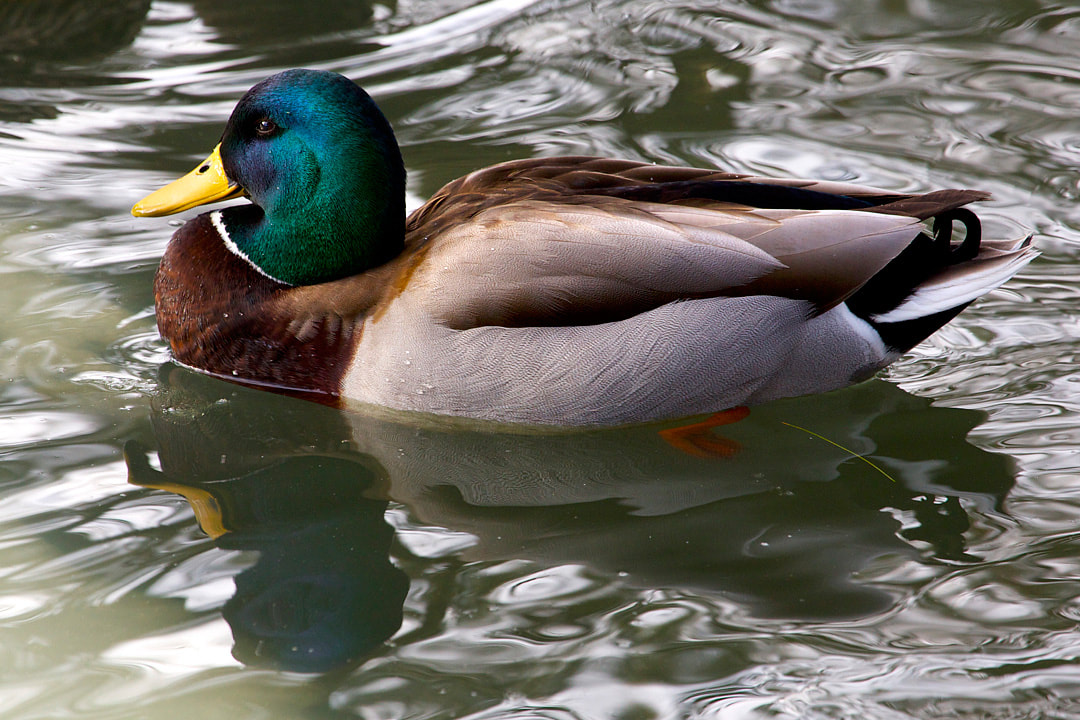Mallard Duck (Anas platyrhynchos domesticus)
|
Physical Description: A subspecies of the mallard that was domesticated by humans, the Domestic Duck (Mallard), was bred for selective traits including white within its feathers. The wild-type Domestic Duck (Mallard) male has a vibrant green head, brown breast, and a silver body and wings, with hints of brown in it. The wings also hold a bright blue-purple patch on their speculum, a region on their secondary feathers. The wild-type Domestic Duck (Mallard) female has a light tan head, and a darker tan and brown body with white highlights. They also have a purple-blue patch on their speculum. The Domestic Duck (Mallard) has been bred to increase the levels of white within the feathers, with some almost entirely white1. Their webbed feet serve as a paddle to help propel them through the water, and their wide, flat beak helps to scoop food up from the water when feeding in water.
Habitat: The Domestic Duck (Mallard) lives in both permanent and seasonal, or vernal, wetlands including ponds, streams, floodplains, rice fields, marshes, and estuaries. They will typically nest on dryland; however, they will occasionally nest on floating vegetation within a wetland2. Range: It can be found on farms worldwide. Diet: They will eat seeds, aquatic vegetation, insects, snails, grain, freshwater shrimp Life Span: The Domestic Duck (Mallard) lives 5-10 years on average. Social Structure: Domestic Ducks (Mallards) flock together and congregate for safety and during the breeding season. Status: As a domesticated species, they are not assessed for the IUCN Red List. The wild population is listed as Least Concern3. Other: The Domestic Duck (Mallard) is a common ornamental species in parks and public settings, as well as in private home settings and farms. 1 https://www.birds.cornell.edu/crows/domducks.htm 2 https://www.allaboutbirds.org/guide/Mallard/lifehistory 3 https://www.iucnredlist.org/species/22680186/155457360 |








